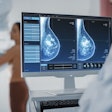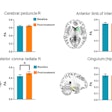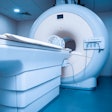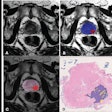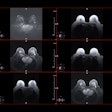Dear MRI Insider,
The annual meeting of the Radiological Society of North America (RSNA) is behind us -- and now comes the time to review and reflect on some of the most interesting and relevant research papers that will affect radiologists and physicians in daily practice.
One such paper comes from Dr. Thomas Magee at the Neuroskeletal Imaging Institute in Merritt Island, FL. In a review of 150 consecutive patients, MR arthrography outperformed 3-tesla MRI in diagnosing partial-thickness supraspinatus tendon tears and superior labrum from anterior to posterior (SLAP) tears.
In addition, MR arthrography was more accurate than conventional 3-tesla MR in diagnosing full-thickness supraspinatus tendon tears, as well as anterior and posterior labral tears, but the statistical difference in the study's comparison was less significant. Read more about Magee's research by clicking here.
Also in this edition of the MRI Insider, staff writer Kate Madden Yee reports on research published in the American Journal of Roentgenology that discusses the value of MRI-guided breast biopsy. While breast MRI has been gaining clinical interest of late, with its high sensitivity rate of 86% to 100% for detecting breast cancer, the researchers note that there can be overlap in the MRI findings of enhancing breast lesions, which makes patient treatment decisions difficult without biopsy.
In further MRI Digital Community news, the Mayo Clinic in Rochester, MN, is using an imaging technique called magnetic resonance elastography (MRE) for detecting liver fibrosis. MRE also may help eliminate the need for liver biopsies.
MRE uses conventional 1.5-tesla MRI equipment and hardware to generate mechanical waves through the liver, which are then detected by a special pulse sequence designed by Mayo Clinic researchers. The noninvasive procedure takes seconds to conduct and has proved greatly beneficial to patients.
Finally, read staff writer Cynthia Keen's piece on how diffusion-weighted MRI can detect injury in children presenting with traumatic brain injury, even if other neurological signs appear normal. The study from Loma Linda University Children's Hospital, published in the Journal of Neurotrauma, notes that early identification of children at high risk for poor six- to 12-month outcomes can be instrumental when deciding to initiate aggressive clinical management of patients with traumatic brain injury.
Please keep in touch with the MRI Digital Community in the coming weeks, as we detail more research reports from RSNA 2008 that undoubtedly will help enhance your practice and use of the modality.

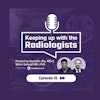
.fFmgij6Hin.png?auto=compress%2Cformat&fit=crop&h=100&q=70&w=100)





.fFmgij6Hin.png?auto=compress%2Cformat&fit=crop&h=167&q=70&w=250)


